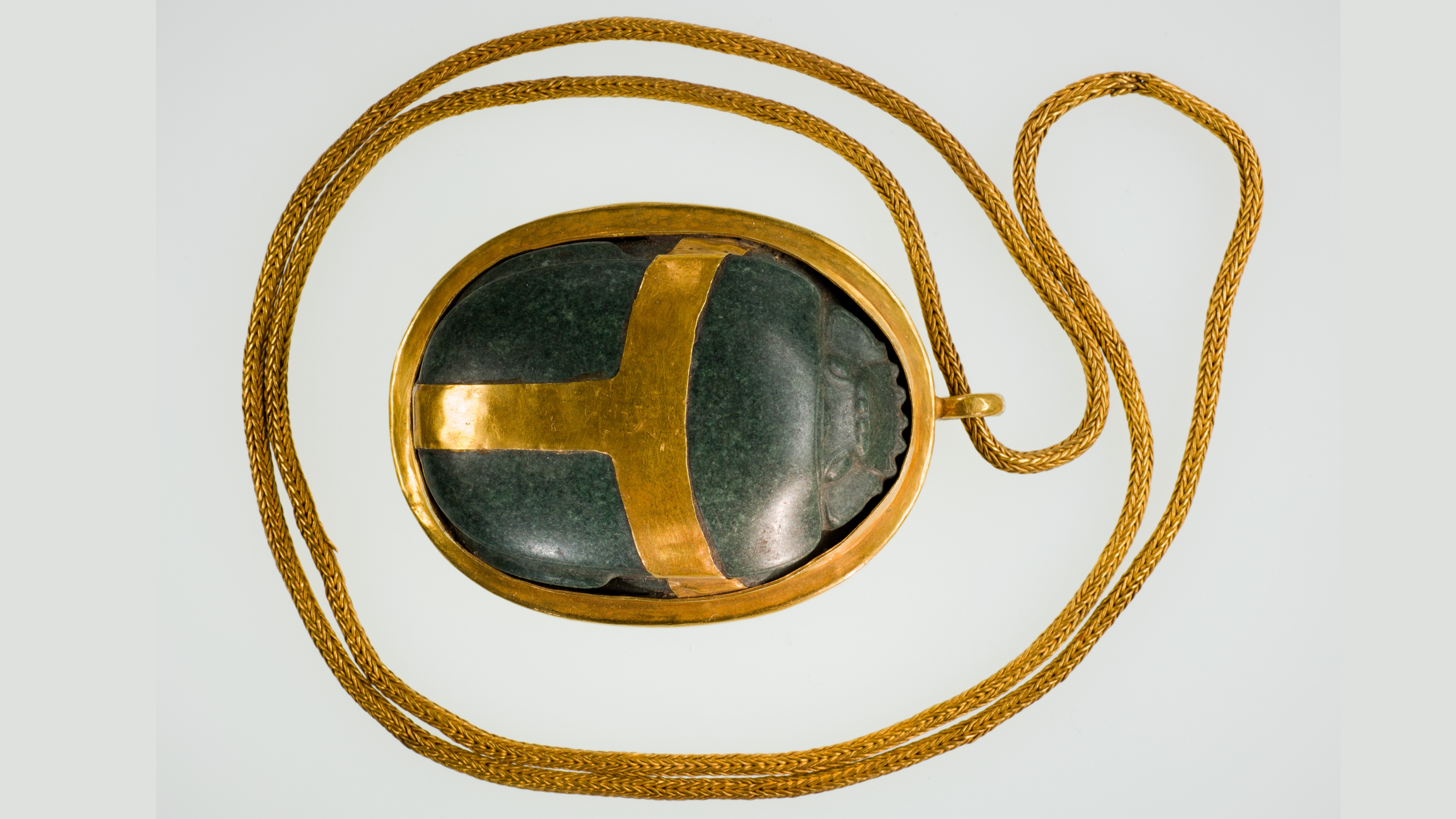
Name: Hatnefer's Heart Scarab
What it is: Gold and serpentinite rock
Where it is from: Thebes (modern-day Luxor), Egypt
When it was made: Around 1473 B.C.
Related: Hårby Valkyrie: A 1,200-year-old gold Viking Age woman sporting a sword, shield and ponytail
What it tells us about the past:
This amulet, shaped like a scarab beetle, was discovered in the tomb of an ancient Egyptian noblewoman named Hatnefer. But the charm, which was intended to assist her journey to the afterlife, was not originally made for her.
The scarab was carved from serpentinite, a greenish-gray metamorphic rock, and measures roughly 2.6 inches (6.6 centimeters) long. It was set in gold and suspended on a 30.5-inch-long (77.5 cm) plaited gold chain. This exquisite necklace was excavated in the 1930s from the tomb of Hatnefer and her husband Ramose and is on display at The Metropolitan Museum of Art in New York City.
Hatnefer's mummy and tomb contents suggest she was powerful in her own domain. She was about 60 years old when she died, and she was buried with bronze and silver mirrors, cosmetics and wood chests full of high-quality linen.
According to The Met, Hatnefer's scarab includes a version of the Book of the Dead chapter on heart weighing, and her name has been inserted over text that was previously erased, suggesting that the amulet was not originally intended for her.
The Book of the Dead passage engraved on the bottom of the scarab discusses the weighing of the heart. In ancient Egypt, the heart was considered the most important organ, as it was thought to be the location of a person's intelligence and memory. After a person died, their heart was weighed by Ma'at, the goddess of truth and justice, to determine if the person led a life worthy of entering the Duat, or the underworld. The "heart scarab" was meant to silence the heart of the deceased so that it could not lie about or misrepresent its owner.
Peter Dornan, former curator of Egyptian art at The Met, translated the cuneiform script on Hatnefer's heart scarab as follows:
The Mistress of the House, Hatnefer, says: "Heart of my mother, heart of my mother, heart of my (actual) being, do not rise up against me as a witness; do not contend against me in the court of judgment; do not make opposition against me in the presence of the keeper of the balance. You are my bodily ka, a Khnum who has invigorated my limbs. When you ascend to the perfection from which we have come, do not cause our names to stink to the entourage who create mankind in their proper stations, but rather may it go well with us and with the listener, so that the judge may rejoice. Do not devise lies against me in the presence of the god, for your reckoning is at hand."







